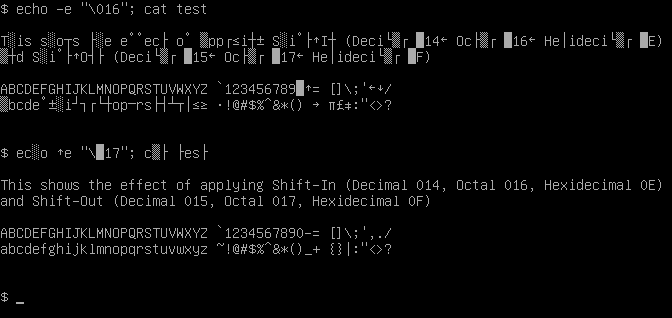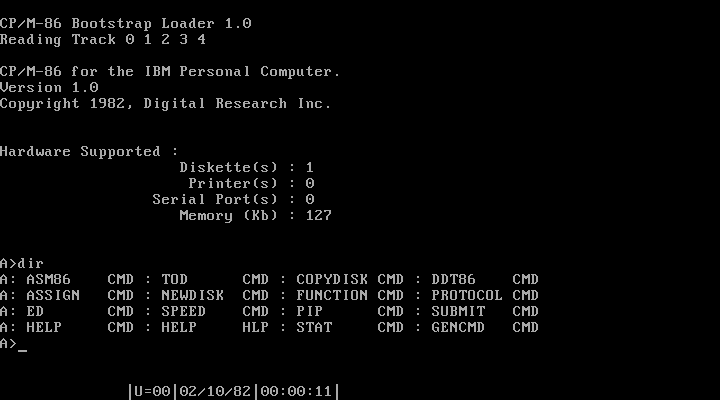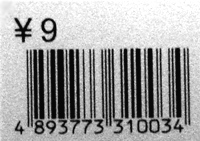|
JIS X 0201
JIS X 0201, a Japanese Industrial Standard developed in 1969 (then called JIS C 6220 until the JIS category reform), was the first Japanese electronic character set to become widely used. It is either a 7-bit encoding or an 8-bit encoding, although the 8-bit form is dominant for modern use (or was until Unicode, e.g. UTF-8 took over). The full name of this standard is ''7-bit and 8-bit coded character sets for information interchange'' (). The first 96 codes comprise an ISO 646 variant, mostly following ASCII with some differences, while the second 96 character codes represent the phonetic Japanese katakana signs. Since the encoding does not provide any way to express hiragana or kanji, it is only capable of expressing simplified written Japanese. Nevertheless, it is possible to express, at least phonetically, the full range of sounds in the language. In the 1970s, this was acceptable for media such as text mode computer terminals, telegrams, receipts or other electronically hand ... [...More Info...] [...Related Items...] OR: [Wikipedia] [Google] [Baidu] |
JISCII
Code page 895 (CCSID 895) is a 7-bit character set and is Japan's national ISO 646 variant. It is the Roman set (first or left half) of the JIS X 0201 (formerly JIS C 6220) Japanese Standard and is variously called Japan 7-Bit Latin, JISCII, JIS Roman, JIS C6220-1969-ro, ISO646-JP or Japanese-Roman. Its ISO-IR registration number is 14. Amongst IBM's code pages, it accompanies code page 896 (Half-width_kana#Encoding, half-width katakana), which encodes the Kana set of JIS X 0201 with extensions, and code page 897 which encodes the 8-bit form of JIS X 0201. It is used in Unix-like systems and, when combined with code page 896 and the 2-byte IBM code page 952 and code page 953, makes up the four code-sets of code page 954, one of IBM's versions of Extended Unix Code#EUC-JP, EUC-JP. Codepage layout See also * Shift JIS References {{DEFAULTSORT:Code Page 895 IBM AIX code pages, 895 ... [...More Info...] [...Related Items...] OR: [Wikipedia] [Google] [Baidu] |
Comite Consultatif International Telephonique Et Telegraphique
The ITU Telecommunication Standardization Sector (ITU-T) is one of the three sectors (divisions or units) of the International Telecommunication Union (ITU). It is responsible for coordinating standards for telecommunications and Information Communication Technology such as X.509 for cybersecurity, Y.3172 and Y.3173 for machine learning, and H.264/MPEG-4 AVC for video compression, between its Member States, Private Sector Members, and Academia Members. The first meeting of the World Telecommunication Standardization Assembly (WTSA), the sector's governing conference, took place on 1 March of that year. ITU-T has a permanent secretariat called the Telecommunication Standardization Bureau (TSB), which is based at the ITU headquarters in Geneva, Switzerland. The current director of the TSB is Chaesub Lee (of South Korea), whose first 4-year term commenced on 1 January 2015, and whose second 4-year term commenced on 1 January 2019. Chaesub Lee succeeded Malcolm Johnson of the United ... [...More Info...] [...Related Items...] OR: [Wikipedia] [Google] [Baidu] |
Shift In
Shift Out (SO) and Shift In (SI) are ASCII control characters 14 and 15, respectively (0x0E and 0x0F). These are sometimes also called "Control-N" and "Control-O". The original meaning of those characters provided a way to shift a coloured ribbon, split longitudinally usually with red and black, up and down to the other colour in an electro-mechanical typewriter or teleprinter, such as the Teletype Model 38, to automate the same function of manual typewriters. Black was the conventional ambient default colour and so was shifted "in" or "out" with the other colour on the ribbon. Later advancements in technology instigated use of this function for switching to a different font or character set and back. This was used, for instance, in the Russian character set known as KOI7-switched, where SO starts printing Russian letters, and SI starts printing Latin letters again. Similarly, they are used for switching between Katakana and Roman letters in the 7-bit version of the Japanese JIS ... [...More Info...] [...Related Items...] OR: [Wikipedia] [Google] [Baidu] |
Shift Out
Shift Out (SO) and Shift In (SI) are ASCII control characters 14 and 15, respectively (0x0E and 0x0F). These are sometimes also called "Control-N" and "Control-O". The original meaning of those characters provided a way to shift a coloured ribbon, split longitudinally usually with red and black, up and down to the other colour in an electro-mechanical typewriter or teleprinter, such as the Teletype Model 38, to automate the same function of manual typewriters. Black was the conventional ambient default colour and so was shifted "in" or "out" with the other colour on the ribbon. Later advancements in technology instigated use of this function for switching to a different font or character set and back. This was used, for instance, in the Russian character set known as KOI7-switched, where SO starts printing Russian letters, and SI starts printing Latin letters again. Similarly, they are used for switching between Katakana and Roman letters in the 7-bit version of the Japanese JIS ... [...More Info...] [...Related Items...] OR: [Wikipedia] [Google] [Baidu] |
CP/M-86
CP/M-86 was a version of the CP/M operating system that Digital Research (DR) made for the Intel 8086 and Intel 8088. The system commands are the same as in CP/M-80. Executable files used the relocatable .CMD file format. Digital Research also produced a multi-user multitasking operating system compatible with CP/M-86, MP/M-86, which later evolved into Concurrent CP/M-86. When an emulator was added to provide PC DOS compatibility, the system was renamed Concurrent DOS, which later became Multiuser DOS, of which REAL/32 is the latest incarnation. The FlexOS, DOS Plus, and DR DOS families of operating systems started as derivations of Concurrent DOS as well. History Digital Research's CP/M-86 was originally announced to be released in November 1979, but was delayed repeatedly. When IBM contacted other companies to obtain components for the IBM PC, the as-yet unreleased CP/M-86 was its first choice for an operating system because CP/M had the most applications at ... [...More Info...] [...Related Items...] OR: [Wikipedia] [Google] [Baidu] |
Digital Research
Digital Research, Inc. (DR or DRI) was a company created by Gary Kildall to market and develop his CP/M operating system and related 8-bit, 16-bit and 32-bit systems like MP/M, Concurrent DOS, FlexOS, Multiuser DOS, DOS Plus, DR DOS and GEM. It was the first large software company in the microcomputer world. Digital Research was originally based in Pacific Grove, California, later in Monterey, California. Overview In 1972, Gary Kildall, an instructor at the Naval Postgraduate School in Monterey, California, began working at Intel as a consultant under the business name Microcomputer Applications Associates (MAA). By 1974, he had developed Control Program/Monitor, or CP/M, the first disk operating system for microcomputers. In 1974 he incorporated as Intergalactic Digital Research, with his wife handling the business side of the operation. The company soon began operating under its shortened name Digital Research. The company's operating systems, starting with CP ... [...More Info...] [...Related Items...] OR: [Wikipedia] [Google] [Baidu] |
MS-DOS
MS-DOS ( ; acronym for Microsoft Disk Operating System, also known as Microsoft DOS) is an operating system for x86-based personal computers mostly developed by Microsoft. Collectively, MS-DOS, its rebranding as IBM PC DOS, and a few operating systems attempting to be compatible with MS-DOS, are sometimes referred to as "DOS" (which is also the generic acronym for disk operating system). MS-DOS was the main operating system for IBM PC compatibles during the 1980s, from which point it was gradually superseded by operating systems offering a graphical user interface (GUI), in various generations of the graphical Microsoft Windows operating system. IBM licensed and re-released it in 1981 as PC DOS 1.0 for use in its PCs. Although MS-DOS and PC DOS were initially developed in parallel by Microsoft and IBM, the two products diverged after twelve years, in 1993, with recognizable differences in compatibility, syntax, and capabilities. Beginning in 1988 with DR-DO ... [...More Info...] [...Related Items...] OR: [Wikipedia] [Google] [Baidu] |
Code Page 932 (Microsoft Windows)
Microsoft Windows code page 932 (abbreviated MS932, Windows-932 or ambiguously CP932), also called Windows-31J amongst other names (see § Terminology below), is the Microsoft Windows code page for the Japanese language, which is an extended variant of the Shift JIS Japanese character encoding. It contains standard 7-bit ASCII codes, and Japanese characters are indicated by the high bit of the first byte being set to 1. Some code points in this page require a second byte, so characters use either 8 or 16 bits for encoding. IBM offer the same extended double-byte codes in their code page 943 (IBM-943 or CP943), which is a combination of the single-byte Code page 897 and the double-byte Code page 941. Windows-31J is the most used non-UTF-8/Unicode Japanese encoding on the web. Actually is the much more declared encoding, but by W3C/WHATWG HTML standards, the encodings are declared the same, and while the latter name is used in the standards it's defined to decode the former. Se ... [...More Info...] [...Related Items...] OR: [Wikipedia] [Google] [Baidu] |
Microsoft
Microsoft Corporation is an American multinational technology corporation producing computer software, consumer electronics, personal computers, and related services headquartered at the Microsoft Redmond campus located in Redmond, Washington, United States. Its best-known software products are the Windows line of operating systems, the Microsoft Office suite, and the Internet Explorer and Edge web browsers. Its flagship hardware products are the Xbox video game consoles and the Microsoft Surface lineup of touchscreen personal computers. Microsoft ranked No. 21 in the 2020 Fortune 500 rankings of the largest United States corporations by total revenue; it was the world's largest software maker by revenue as of 2019. It is one of the Big Five American information technology companies, alongside Alphabet, Amazon, Apple, and Meta. Microsoft was founded by Bill Gates and Paul Allen on April 4, 1975, to develop and sell BASIC interpreters for the Altair 8800. It rose to do ... [...More Info...] [...Related Items...] OR: [Wikipedia] [Google] [Baidu] |
Backslash
The backslash is a typographical mark used mainly in computing and mathematics. It is the mirror image of the common slash . It is a relatively recent mark, first documented in the 1930s. History , efforts to identify either the origin of this character or its purpose before the 1960s have not been successful. The earliest known reference found to date is a 1937 maintenance manual from the Teletype Corporation with a photograph showing the keyboard of its Kleinschmidt keyboard perforator WPE-3 using the Wheatstone system. The symbol was called the "diagonal key", and given a (non-standard) Morse code of . (This is the code for the slash symbol, entered backwards.) In June 1960, IBM published an "Extended character set standard" that includes the symbol at 0x19. Referencing Computer Standards Collection, Archives Center, National Museum of American History, Smithsonian Institution, box 1. In September 1961, Bob Bemer (IBM) proposed to the X3.2 standards committee that ... [...More Info...] [...Related Items...] OR: [Wikipedia] [Google] [Baidu] |
Dollar Sign
The dollar sign, also known as peso sign, is a symbol consisting of a capital " S" crossed with one or two vertical strokes ($ or ), used to indicate the unit of various currencies around the world, including most currencies denominated "peso" and "dollar". The explicitly double-barred sign is called cifrão. The sign is also used in several compound currency symbols, such as the Brazilian real (R$) and the Nicaraguan córdoba (C$). The one- and two-stroke version are often considered mere stylistic (typeface) variants, although in some places and epochs one of them may have been specifically assigned, by law or custom, to a specific currency. The Unicode computer encoding standard defines a single code for both. In most English-speaking countries that use that symbol, it is placed to the left of the amount specified, e.g. "$1", read as "one dollar". History Use for the Spanish American peso in the late 1700s The symbol appears in business correspondence in the 1770s ... [...More Info...] [...Related Items...] OR: [Wikipedia] [Google] [Baidu] |
Yen Sign
The yen and yuan sign, ¥, is a currency sign used for the Japanese yen and the Renminbi, Chinese yuan currency, currencies when writing in Latin scripts. This monetary symbol resembles a Latin letter Y with a single or double horizontal stroke. The symbol is usually placed before the value it represents, for example: ¥50, or JP¥50 and CN¥50 when disambiguation is needed. When writing in Japanese and Chinese, the Japanese kanji and Chinese character is written following the amount, for example in Japan, and or in China. Code points The Unicode code point is . Additionally, there is a Full-width, full width character, , at code point for use with wide fonts, especially East Asian fonts. There was no code-point for this symbol in the original (7-bit) US-ASCII and consequently many early systems reassigned (allocated to the backslash (\) in ASCII) to the yen sign. With the arrival of 8-bit encoding, the ISO/IEC 8859-1 ("ISO Latin 1") character set assigned code point to ... [...More Info...] [...Related Items...] OR: [Wikipedia] [Google] [Baidu] |





